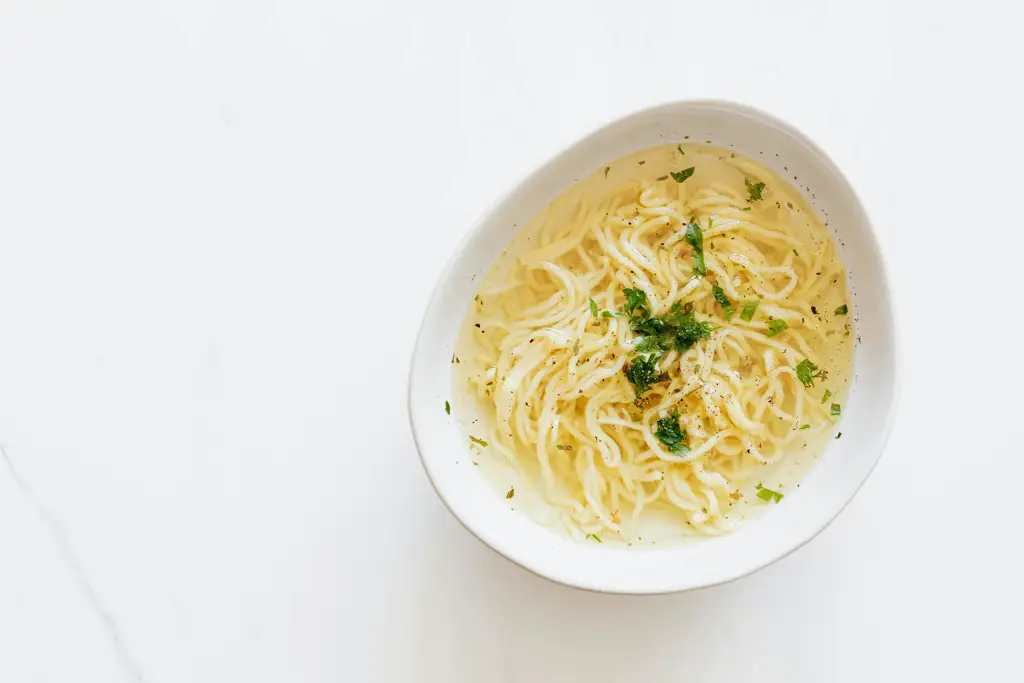The vibrant and refreshing Healthy Greek Salad, often simply called a Greek Salad, is far more than just a simple side dish; it’s a culinary testament to the Mediterranean diet’s enduring legacy. Its origins trace back to ancient Greece, although pinning down a precise date is impossible. Early versions likely featured ingredients readily available in the region: olives, herbs, and perhaps some local greens. However, the salad as we know it today—with its characteristic combination of tomatoes, cucumbers, onions, feta cheese, and olives—emerged more fully in the 20th century, gaining popularity both within Greece and internationally.
Greece’s climate and geography played a pivotal role in shaping the salad’s composition. The abundance of sunshine and fertile land provided an ideal environment for growing tomatoes, cucumbers, and olives, all key components of the dish. The use of feta cheese, a brined curd cheese made from sheep’s or goat’s milk, further solidified the salad’s connection to Greek culinary traditions. Feta’s salty, tangy flavor perfectly complements the other fresh ingredients, creating a balanced and flavorful experience. Interestingly, the use of lettuce in Greek salads is a relatively modern addition, not traditionally found in authentic recipes. Many purists prefer to omit it, focusing on the more robust flavors of the other vegetables.
Beyond its deliciousness, the Greek Salad holds significant cultural importance. It’s a staple at almost every Greek meal, appearing as a side dish, a light lunch, or even a component of larger dishes. It has become synonymous with Greek culture and is often featured in Greek celebrations and gatherings. Its popularity has extended far beyond Greek borders, becoming a beloved dish worldwide. Statistics show that the Mediterranean diet, of which the Greek Salad is a quintessential example, has been linked to numerous health benefits, including a reduced risk of heart disease, certain cancers, and type 2 diabetes. A 2013 study published in the New England Journal of Medicine showed that participants following a Mediterranean diet had a significantly lower risk of cardiovascular events compared to those on a low-fat diet. This underscores the salad’s not only deliciousness but also its contribution to a healthy lifestyle.
The simplicity of the Greek Salad belies its profound impact. Its ingredients, readily available and easily combined, represent a harmonious blend of nature’s bounty and culinary ingenuity. The salad’s enduring popularity is a testament to its refreshing taste, its nutritional value, and its deep-rooted connection to Greek culture and history. It’s a dish that continues to evolve while remaining true to its core ingredients and the spirit of the Mediterranean diet, offering a healthy and flavorful experience with each bite.
Ingredients and Measurements
This recipe for a Healthy Greek Salad prioritizes fresh, high-quality ingredients for optimal flavor and nutritional value. The quantities listed below are for a serving of four, but can easily be scaled up or down to suit your needs. Remember to adjust the quantities proportionally to maintain the balanced flavor profile.
Cucumbers: We recommend using about 1 large English cucumber (approximately 1 pound) or two smaller Persian cucumbers. English cucumbers have thinner skins and fewer seeds, requiring less preparation. If using regular cucumbers, peel them and remove the seeds for a less watery salad. Cutting the cucumber into approximately ½-inch thick slices allows for a pleasant texture and prevents them from becoming overly soggy.
Tomatoes: Use 2 cups of ripe, juicy tomatoes, preferably a mix of varieties for a more complex flavor. Roma tomatoes offer a firmer texture, while heirloom varieties add visual appeal and a unique taste. Avoid using overly soft or bruised tomatoes. Cut the tomatoes into bite-sized wedges or chunks, depending on their size. A combination of sizes adds visual interest.
Red Onion: One small to medium red onion (approximately ½ cup chopped) provides a delightful sharpness that complements the other ingredients. Finely chop the red onion to minimize its strong flavor if you prefer a milder taste. Soaking the chopped red onion in cold water for 10-15 minutes before adding it to the salad can also help reduce its pungency.
Bell Peppers: Include ½ cup of chopped bell peppers for added sweetness and crunch. A mix of colors (red and yellow) is visually appealing, but any color will work. Choose firm, brightly colored peppers for the best flavor and texture. Remove the seeds and membranes before chopping for a cleaner taste.
Kalamata Olives: Use ½ cup of Kalamata olives, pitted. These olives provide a characteristic salty, briny flavor essential to a true Greek salad. You can adjust the quantity based on your preference for saltiness. If using whole olives, halve them for easier eating.
Feta Cheese: Approximately 4 ounces (115 grams) of crumbled feta cheese adds a creamy, salty, tangy element. Use high-quality feta for the best flavor. Crumble the feta by hand for a more rustic look and texture. Avoid pre-crumbled feta, as it often contains additives.
Fresh Herbs: Use 2 tablespoons of chopped fresh oregano and 1 tablespoon of chopped fresh parsley. Fresh herbs are crucial for the authentic Greek salad flavor. Dried herbs can be substituted, but use approximately 1 teaspoon of each dried herb in place of the fresh herbs. The flavor will be less intense.
Dressing: The dressing is key to a great Greek salad. See the separate section for the detailed dressing recipe and measurements. Remember that the quantity of dressing will depend on your personal preference and the amount of vegetables you are using. Start with a smaller amount and add more as needed.
Optional additions: Consider adding ½ cup of artichoke hearts (marinated or plain), 1/4 cup of capers, or a handful of chickpeas for extra protein and flavor. Always ensure that optional additions are fresh and of good quality.
Preparation of Vegetables (Washing, Chopping, etc.)
The success of a healthy Greek salad hinges on the freshness and quality of its ingredients. Proper preparation of the vegetables is crucial for achieving the best flavor and texture. This section details the steps involved in washing, chopping, and preparing the vegetables for a vibrant and delicious salad.
Washing: Begin by thoroughly washing all your vegetables under cold running water. This removes any dirt, pesticides, or other contaminants. For leafy greens like lettuce and spinach, consider soaking them in a bowl of cold water with a splash of white vinegar for about 10-15 minutes. This helps to dislodge any hidden dirt or insects. After soaking, rinse them thoroughly again under cold running water and gently lift them out of the bowl, avoiding vigorous shaking which may bruise the leaves. Do not use soap to wash your vegetables as it can leave a residue and affect their taste.
Tomatoes: Wash your tomatoes gently under cold running water. For large tomatoes, you might want to cut them in half to easily remove the core and any blemishes. Avoid washing tomatoes too vigorously, as this can damage their delicate skin. For a classic Greek salad, aim for approximately 2 large or 3 medium tomatoes, roughly chopped into 1-inch cubes.
Cucumbers: Wash the cucumbers thoroughly. Peel them if desired, but leaving the skin on adds nutrients and flavor. Slice off the ends and then either chop them into half-moon slices about ¼ inch thick, or dice them into ½-inch cubes, depending on your preference. Use approximately 1 medium cucumber for this recipe.
Onions: Wash the onion thoroughly under cold water. Red onions are traditionally used in Greek salad for their vibrant color and slightly sweet flavor. Peel the onion and slice it thinly, or finely dice it, depending on your preference. Start with ½ a medium red onion, and adjust to your taste. If you find onions too pungent, consider briefly soaking the sliced onion in cold water for 5-10 minutes to reduce their sharpness.
Bell Peppers: Wash the bell peppers thoroughly. Remove the stem, seeds, and membranes. Choose a vibrant-colored bell pepper, such as red or yellow, for added visual appeal and sweetness. Cut the pepper into roughly 1-inch pieces. Use about ½ a medium bell pepper.
Olives & Feta: While not requiring the same washing process, olives should be drained well before adding to the salad. Feta cheese should be crumbled or cut into small cubes. Use approximately ½ cup of Kalamata olives and 4 ounces of feta cheese for a balanced salad.
Chopping Techniques: For consistent chopping, use a sharp knife and a cutting board. Consistent sizes ensure even cooking and distribution of flavors. For a rustic look, you can opt for slightly larger or more uneven pieces. However, maintaining some uniformity helps ensure every bite is balanced.
Important Note: Prepare your vegetables just before assembling the salad to maintain their freshness and crispness.
Making the Vinaigrette
The success of a Greek salad hinges heavily on the quality of its vinaigrette. A perfectly balanced dressing elevates the fresh ingredients, allowing their individual flavors to shine while creating a harmonious whole. This recipe focuses on creating a bright, tangy, and subtly herbaceous vinaigrette that complements the salad perfectly without overpowering it.
We’ll be making a classic Greek vinaigrette using high-quality extra virgin olive oil, red wine vinegar, and a touch of Dijon mustard to emulsify the dressing and add a depth of flavor. The key to a great vinaigrette is using fresh ingredients and emulsifying properly. This ensures a smooth, creamy texture that coats the salad evenly.
For this recipe, you will need:
- 1/4 cup extra virgin olive oil (Use a good quality olive oil with a fruity aroma; this will significantly impact the overall flavor)
- 2 tablespoons red wine vinegar (Red wine vinegar adds a pleasant tartness, but you can substitute with white wine vinegar or even lemon juice for a lighter taste)
- 1 teaspoon Dijon mustard (Dijon mustard acts as an emulsifier, helping to bind the oil and vinegar together for a smoother consistency)
- 1 small clove garlic, minced (Fresh garlic is best; avoid using pre-minced garlic from a jar as it can be quite pungent)
- 1/2 teaspoon dried oregano (Use good quality dried oregano; it’s more potent than fresh in this application)
- 1/4 teaspoon dried thyme (A small amount of thyme adds a lovely complexity to the dressing)
- Salt and freshly ground black pepper to taste (Season generously; taste and adjust as needed)
Instructions:
1. In a small bowl, whisk together the red wine vinegar, Dijon mustard, minced garlic, oregano, and thyme. Whisk vigorously to ensure the mustard is fully incorporated.
2. Slowly drizzle in the extra virgin olive oil while whisking constantly. This slow addition helps create a stable emulsion, preventing the oil from separating. Continue whisking until the vinaigrette is emulsified and has a smooth, creamy texture. This might take a minute or two of consistent whisking.
3. Season with salt and freshly ground black pepper to taste. Start with a small amount of salt and pepper, and add more as needed until the vinaigrette is perfectly balanced. Taste the vinaigrette and adjust the seasoning as you prefer; some may prefer more vinegar for a sharper taste, while others may prefer more olive oil for a richer flavor.
4. Once the vinaigrette is to your liking, you can either immediately dress your Greek salad or store it in an airtight container in the refrigerator for later use. If storing, it’s best to use within 2-3 days for optimal freshness.
Professional Tip: For a smoother vinaigrette, you can use an immersion blender to emulsify the ingredients. This method is particularly useful for larger batches.
Assembling the Salad: A Step-by-Step Guide
Creating a vibrant and delicious Greek salad is as much about the assembly as it is about the ingredients. Proper layering and technique ensure optimal freshness, flavor distribution, and visual appeal. This section will guide you through the process, ensuring your Greek salad is a masterpiece.
Start with the base: Begin by selecting a large, shallow bowl – ideally one that allows for easy serving and showcases the salad’s colorful components. The size of your bowl will depend on the quantity of salad you’re making. For a serving of four, a 12-inch bowl is ideal. Avoid using overly deep bowls, as this can make the salad soggy.
Layering the vegetables: The order in which you add your vegetables matters. Begin with the heartier, less delicate ingredients. First, add your 1 cup of chopped romaine lettuce or your preferred leafy green. Spread it evenly across the bottom of the bowl to form a base. Avoid over-packing the lettuce; it needs some space to breathe. Next, add 1 large cucumber, thinly sliced or diced. This provides a refreshing crunch and a nice contrast in texture.
Next, incorporate 1 pint of cherry or grape tomatoes, halved. The halved tomatoes distribute their juicy sweetness evenly throughout the salad. Avoid using overripe tomatoes as they can become mushy and release excessive liquid. Then add ½ red onion, thinly sliced. Red onion offers a pleasant bite and complements the other flavors. If you prefer a milder flavor, briefly soak the sliced onion in cold water for 10-15 minutes to reduce its sharpness.
Adding the protein and olives: Now, it’s time to add the protein and olives. For a classic Greek salad, add 1 cup of crumbled feta cheese. Crumbling the feta allows for even distribution throughout the salad, preventing large clumps. Next, incorporate ½ cup of Kalamata olives, pitted and halved. Kalamata olives offer a salty, briny counterpoint to the sweetness of the tomatoes and the tang of the feta. You can adjust the quantity of olives based on your preference.
The finishing touches: Finally, add your dressing (see our recipe for a delicious homemade Greek dressing). Do not add the dressing until just before serving. This prevents the salad from becoming soggy and preserves the crispness of the vegetables. Gently toss the salad to coat all the ingredients evenly. Avoid over-tossing, as this can bruise the lettuce and other delicate components.
Presentation: A well-presented salad is more appealing. Consider arranging some of the larger components, such as tomato halves or cucumber slices, artfully on top for visual impact. Serve immediately to enjoy the fresh flavors at their peak.
Professional Recommendation: For the best flavor and texture, use fresh, high-quality ingredients. Prepare your vegetables just before assembling the salad to maintain their crispness and vibrancy. Experiment with different variations by adding other vegetables like bell peppers or artichoke hearts.
Serving Suggestions
Your vibrant and healthy Greek salad is ready to be enjoyed! To maximize its freshness and flavor, consider these serving suggestions to elevate your culinary experience. This salad is incredibly versatile and can be served in a variety of ways, depending on the occasion and your personal preferences.
For a classic presentation: Arrange the salad components on individual plates. Begin with a bed of crisp romaine lettuce or mixed greens (approximately 4 cups per serving). Then, distribute 1/2 cup of the chopped cucumber and tomato mixture evenly across the lettuce. Add 1/4 cup of Kalamata olives, 1/4 cup of crumbled feta cheese, and 2 tablespoons of red onion. Finally, drizzle generously with your homemade Greek dressing (approximately 2-3 tablespoons per serving). Garnish with fresh oregano sprigs for an authentic touch.
For a larger gathering or buffet: Prepare the salad in a large bowl and let your guests serve themselves. Ensure you have enough serving utensils readily available. Consider using a variety of serving bowls for the different components, allowing guests to customize their portions. This is especially helpful if you have guests with dietary restrictions or preferences. For example, you could offer a separate bowl of chickpeas or additional vegetables for those who want to add more protein or nutrients.
As a side dish: This Greek salad is the perfect complement to grilled meats, fish, or poultry. A serving of 1.5-2 cups per person is ideal as a side. The acidity of the tomatoes and the tanginess of the feta cheese cut through the richness of grilled proteins. The fresh herbs provide a delightful aromatic contrast.
As a light lunch or main course: Add 1/2 cup of cooked quinoa or chickpeas to make your salad a more substantial meal. This adds protein and fiber, making it a more filling and satisfying option. You could also add grilled chicken or shrimp for extra protein. For a vegetarian option, consider adding some roasted vegetables like bell peppers or zucchini.
Creative variations: Don’t be afraid to experiment! Adding different types of cheese, such as halloumi or goat cheese, can add a unique flavor profile. You can also incorporate other fresh vegetables like bell peppers, artichoke hearts, or even roasted sweet potatoes. Remember to consider the overall flavor balance when adding additional ingredients.
Storage and reheating: For best results, consume the salad immediately after preparation. However, if leftovers remain, store them in an airtight container in the refrigerator for up to 2 days. Avoid storing the dressing separately and tossing it in just before serving to prevent the salad from becoming soggy. Do not reheat the salad, as this will diminish its freshness and texture.
Presentation is key: Whether you’re serving this salad as a simple side dish or a show-stopping centerpiece, consider the presentation. Use a beautiful bowl or platter, and garnish generously with fresh herbs and a drizzle of olive oil. A little attention to detail can make a big difference in the overall dining experience.
Tips for the Freshest Salad
A truly spectacular Greek salad hinges on the freshness of its ingredients. Wilted lettuce or mealy tomatoes can ruin the entire experience. Following these tips will ensure your Greek salad is bursting with vibrant flavor and satisfying crunch.
Choose the Right Produce: Start with the best quality ingredients you can find. Visit your local farmers market if possible; you’ll often find superior produce at peak ripeness. For a salad serving 4-6 people, aim for the following quantities: 1 large head of romaine lettuce (or equivalent in mixed greens), 2 large ripe tomatoes (heirloom varieties are excellent), 1/2 cup Kalamata olives (pitted), 1/2 cup crumbled feta cheese (about 4 ounces), 1/2 red onion (thinly sliced), and 1 cucumber (about 8 ounces, peeled and sliced or diced).
Washing is Crucial: Thoroughly wash all your vegetables. Don’t just rinse them under water. For lettuce, separate the leaves and soak them in a large bowl of cold water for about 5-10 minutes. This helps dislodge any dirt or hidden insects. Gently swish the leaves around, then lift them out and rinse again under cold running water. Pat them dry with paper towels or a clean salad spinner. For tomatoes, cucumbers, and onions, wash them individually under running water, scrubbing gently with your fingers or a vegetable brush to remove any residue.
Proper Storage is Key: Storing your ingredients correctly before making the salad is crucial. Avoid storing lettuce in plastic bags, as this traps moisture and promotes wilting. Instead, wrap loosely in paper towels and store in a crisper drawer. Tomatoes should be stored at room temperature until ripe, then refrigerated if not used immediately. Cucumbers and onions can be stored in the refrigerator in a plastic bag with a few holes poked for ventilation. Olives and feta can be stored in the refrigerator until ready to use.
Timing is Everything: Assemble your salad just before serving. Don’t dress the salad too far in advance, as this can cause the lettuce to wilt and the vegetables to become soggy. The vinaigrette should be added right before serving to maintain the crispness and prevent the flavors from becoming muted. If you need to prepare elements ahead of time, such as chopping vegetables, store them separately in airtight containers in the refrigerator to maintain their freshness.
Consider your Herbs: Fresh herbs like oregano and dill are integral to a classic Greek salad. Use generous amounts – a good handful of each will make a significant difference in flavor. Chop them finely just before adding them to the salad to preserve their vibrant color and aroma. Add them at the very end to prevent them from wilting.
Beyond the Basics: Experiment with seasonal additions! Bell peppers (red or yellow), cherry tomatoes, or even grilled zucchini can add a delicious twist to your Greek salad. Remember to wash and prepare these extra ingredients with the same care as the core components of your salad.
By following these tips, you’ll be well on your way to creating a Greek salad that’s not only healthy and delicious but also visually stunning, showcasing the bright colors and textures of fresh, high-quality ingredients.
Healthy Greek Salad: Recommendations
This Healthy Greek Salad recipe is designed to be a delicious and nutritious meal or side dish. To maximize its benefits and enjoyment, please follow these recommendations.
Serving Suggestions: This salad is incredibly versatile. It can be served as a light lunch on its own, a refreshing side to grilled meats like chicken or fish, or as a component of a larger Mediterranean-style meal. For a heartier meal, consider adding grilled halloumi cheese, chickpeas, or lentils. The robust flavors pair beautifully with grilled seafood, particularly shrimp or swordfish. For a vegetarian option, consider adding toasted pine nuts or crumbled feta cheese for added texture and flavor. A simple drizzle of high-quality olive oil just before serving enhances the freshness and flavor profile.
Storage Conditions: For optimal freshness, it’s best to consume the salad immediately after preparation. However, if you need to store leftovers, separate the dressing from the salad ingredients. Store the vegetables and feta (if using) in an airtight container in the refrigerator. Store the dressing separately. This prevents the vegetables from becoming soggy. The salad should be consumed within 1-2 days of preparation for the best quality and flavor. Do not store the salad with the dressing already added.
Complementary Dishes: This salad is a perfect accompaniment to a variety of dishes. It pairs excellently with grilled or roasted meats, particularly lamb, chicken, or fish. It also complements vegetarian dishes such as falafel or lentil stew. For a complete Mediterranean meal, consider serving it alongside hummus, pita bread, and a side of olives. The vibrant flavors of the salad cut through richer dishes, making it an ideal counterpoint.
Nutritional Information (per serving, approximate): The nutritional content will vary slightly depending on the specific ingredients and quantities used. However, a typical serving of a Healthy Greek Salad (approximately 1.5 cups) contains approximately:
- Calories: 250-350
- Protein: 8-12g
- Fat: 15-20g (mostly healthy unsaturated fats from olive oil)
- Carbohydrates: 20-30g
- Fiber: 5-7g
- Vitamins and Minerals: Rich in Vitamin C, Vitamin K, Vitamin A, Potassium, and other essential nutrients.
Note: This nutritional information is an estimate and may vary depending on the specific ingredients used and portion sizes. For precise nutritional information, use a nutrition calculator and input the exact ingredients and quantities used in your specific recipe.
Important Considerations: Always wash all produce thoroughly before use. Adjust the amount of olive oil and feta cheese to suit your taste preferences and dietary needs. For a vegan option, omit the feta cheese. Remember that the freshness of the ingredients significantly impacts the overall taste and quality of the salad. Choose high-quality, ripe vegetables for the best flavor.





